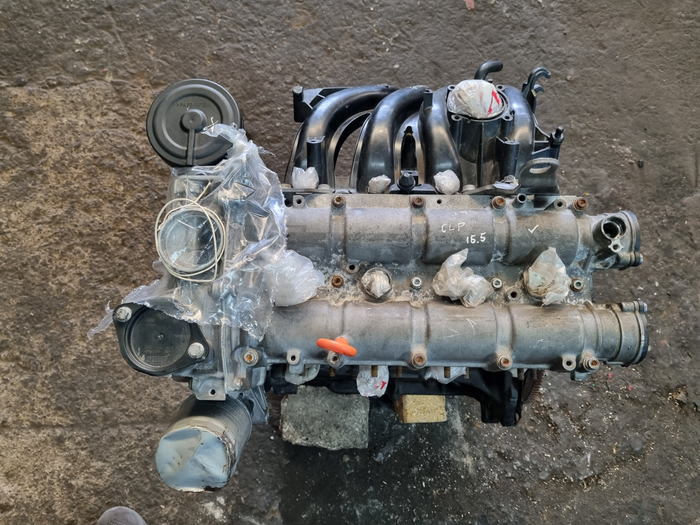Exactly How a Clp Engine Can Improve Performance in Different Industries
The introduction of CLP engines notes a considerable change in operational performance across different sectors, driven by their capacity to optimize gas consumption and lessen downtime. Industries such as manufacturing and logistics stand to get considerably from their durable style and consistent power outcome, which assure to improve procedures and enhance efficiency. As companies progressively focus on sustainability together with efficiency, the function of CLP engines comes to be even a lot more critical. What stays to be seen is just how these developments will shape the future landscape of industrial procedures and their effect on broader financial fads (clp engine).
Review of CLP Engines
CLP engines, or Constant Liquid Propellant engines, stand for a substantial innovation in propulsion innovation, especially for space applications. These engines utilize a continuous feed system that allows for the sustained expulsion of propellant, leading to boosted performance and performance compared to traditional solid or hybrid propulsion systems. By preserving a constant flow of fluid propellant, CLP engines can attain a lot more accurate thrust control, which is crucial for maneuvering spacecraft in various goal situations.
The design of CLP engines incorporates advanced products and ingenious fuel administration systems. clp engine. This causes minimized weight and enhanced integrity, vital factors for long-duration room missions. In addition, the constant procedure decreases the danger of burning instability, a typical challenge in traditional rocket engines.

Benefits in Manufacturing
The manufacturing of Continuous Liquid Propellant (CLP) engines presents a number of remarkable benefits that improve both effectiveness and cost-effectiveness. One of the primary benefits is the structured manufacturing procedure, which decreases the intricacy connected with typical propulsion systems. By making use of liquid propellant, producers can achieve greater accuracy in engine efficiency, resulting in optimized energy output and reduced waste.
In addition, CLP engines promote a greater degree of modularity, permitting less complicated combination into numerous production lines. This flexibility can significantly lower preparations and improve overall functional flexibility. The usage of CLP modern technology also tends to lessen the requirement for extensive upkeep due to less moving components, which equates right into decreased downtime and operational prices.

Applications in Logistics
Leveraging Constant Liquid Propellant (CLP) engines in logistics uses considerable benefits in functional effectiveness and dependability. These engines supply a durable option for different transport demands, making it possible for the smooth motion of products across large distances. The fundamental design of CLP engines enables consistent my link power output, which translates right into smoother and extra foreseeable transport routines.
One of the key applications of CLP engines in logistics is in sturdy products transport, where they can drive both ground and aerial vehicles. Their ability to keep high efficiency under varying load conditions ensures that distribution timelines are satisfied, thus boosting customer complete satisfaction. Additionally, CLP engines can be incorporated into automated logistics systems, assisting in real-time tracking and optimizing course planning.
Moreover, the longevity of CLP engines lowers maintenance downtime, allowing logistics firms to maximize their functional abilities. This is particularly beneficial in warehousing procedures, where efficiency in managing and carrying goods is important. As logistics remains to advance, the combination of CLP engines represents a forward-thinking technique that not only enhances performance however additionally sustains the sector's growing needs for reliability and rate.
Impact on Power Efficiency
Exactly How do Continuous Liquid Propellant (CLP) engines boost energy effectiveness in transportation? CLP engines use a regular flow of fluid gas, optimizing burning procedures and maintaining a steady thrust outcome. This style minimizes energy losses connected with traditional combustion engines, where gas distribution can vary and result in inefficiencies.
The constant procedure of CLP engines enables a much more reliable thermal cycle, causing higher particular impulse contrasted to standard engines. clp engine. This converts to reduced fuel intake for the very same quantity of job done, considerably decreasing functional costs across different transportation markets, consisting of aviation and maritime markets
Additionally, the capacity of CLP engines to keep optimum efficiency under differing lots problems lowers the need for frequent acceleration and slowdown, additionally boosting gas effectiveness. Enhanced power effectiveness not just contributes to cost savings but likewise brings about decrease greenhouse gas exhausts, straightening with international sustainability objectives.
Future Trends and Innovations
Emerging developments in Constant Liquid Propellant (CLP) engine technology promise to reinvent the landscape of transport effectiveness and sustainability. As industries pivot toward greener choices, CLP engines stand at the center, incorporating ingenious materials and design techniques that boost performance while reducing environmental impact.
Among one of the most promising trends is the fostering of hybrid systems that combine CLP engines with renewable resource sources. This harmony can enhance fuel intake and minimize emissions, straightening with international sustainability goals. Moreover, innovations in computational fluid dynamics (CFD) are promoting the style of more aerodynamically efficient engines, resulting in reduced drag and boosted fuel performance.
Moreover, the development of wise monitoring systems is established to enhance functional efficiencies. These systems utilize data analytics and IoT innovation to optimize engine efficiency in real-time, making certain that try this out the engines operate within their most effective parameters.
As research study continues to discover alternative propellant solutions-- such as biofuels and synthetic fuels-- the future of CLP engines looks encouraging. By harnessing these advancements, sectors can not only enhance their performance but additionally contribute dramatically to a cleaner, more sustainable future in transport.
Verdict
In conclusion, CLP engines represent try this web-site a substantial advancement in efficiency across several industries. Their capability to maximize fuel usage and minimize functional prices, combined with a continuous feed system, improves power outcome and functional integrity. The assimilation of advanced materials and fewer moving parts reduces maintenance demands, while positioning with sustainability objectives settings CLP engines as an essential innovation for the future. Proceeded development in this area assures additional enhancements in effectiveness and environmental performance.